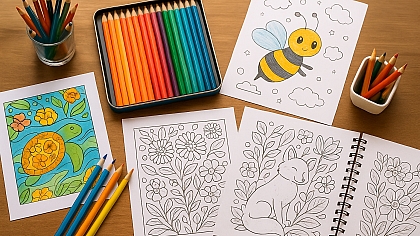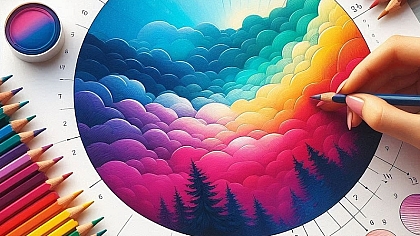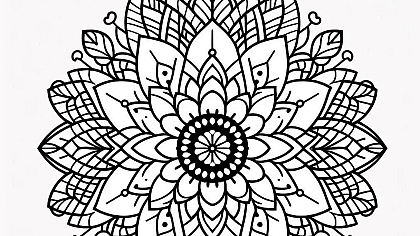
Benefit of Colouring for Mental Well-being
Colouring, once thought of as a simple childhood pastime, has evolved into a meaningful and therapeutic activity embraced by adults around the world. The rhythmic motion of filling spaces with colour, the quiet moments of concentration, and the gentle invitation to be creative have all positioned colouring as a practice with significant benefits for mental well-being. While it may appear to be a leisurely pursuit, the act of colouring can deeply influence the mind, fostering relaxation, clarity, and emotional balance.
The Meditative Nature of Colouring
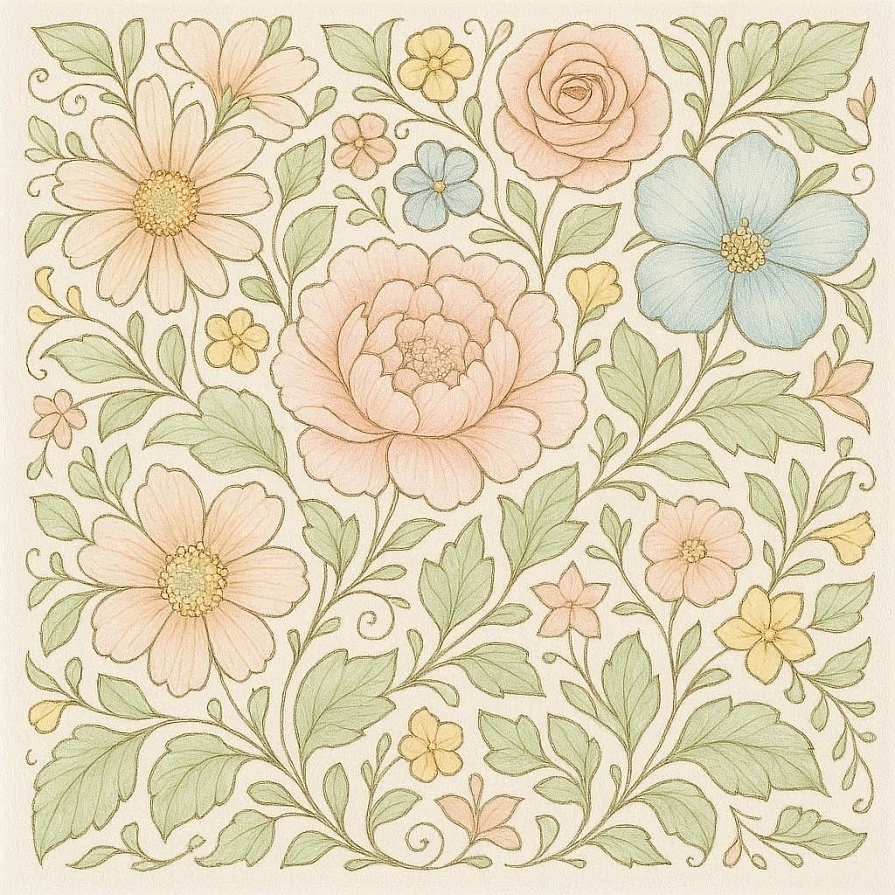
One of the most profound aspects of colouring lies in its meditative quality. As the hand glides over the page and colours slowly build upon one another, the mind begins to quieten. The repetitive and rhythmic motions encourage focus without strain, allowing intrusive thoughts to fade into the background. In this sense, colouring mirrors meditation, drawing the mind away from distractions and guiding it into the present moment.
The focus required to stay within lines, choose hues, and create harmony on the page encourages mindfulness. Each stroke becomes a moment of presence, a gentle act of awareness. Instead of ruminating over past worries or anticipating future events, the individual becomes immersed in the now, where only the page and colours exist. This mindfulness allows for a temporary pause from mental clutter, creating a sense of calm that lingers long after the page is complete.
A Gentle Escape from Everyday Pressures
In modern life, where constant stimulation from screens, deadlines, and responsibilities can feel overwhelming, colouring offers a peaceful retreat. It provides a space where the mind can slow down and rest. Unlike tasks that demand productivity or evaluation, colouring is free from expectation. There is no right or wrong way to colour, and this freedom can be profoundly liberating.
Engaging in a colouring session allows the brain to shift from the analytical, high-energy state often associated with stress, into a more relaxed mode. This change in mental rhythm brings relief from the tension of daily life. Many people find that even a short period of colouring offers the same refreshment as a brief meditation session, allowing them to return to their responsibilities with renewed focus and emotional steadiness.
Colour as an Emotional Language

Colours themselves carry emotional resonance. Each hue has the power to evoke certain feelings and associations. Soft blues and greens can induce calm, while bright yellows and oranges can uplift and energise. When individuals choose colours intuitively during colouring, they are often expressing emotions that may not have been consciously recognised.
The process becomes a form of emotional communication. Without words, the colourer is able to express what they feel through the shades and tones they select. In times of sadness, darker or muted colours might dominate the page, while moments of joy might bring forth vibrant and contrasting hues. This unspoken language of colour allows emotions to surface gently, helping to process and understand them in a non-verbal way.
A Tool for Reducing Anxiety and Restlessness
For those who experience anxiety, colouring can act as a soothing companion. The combination of structure and creativity offers a comforting balance. The outlines of a design provide boundaries and predictability, while the choice of colours introduces freedom and individuality. This balance can create a sense of control in moments when emotions or thoughts feel scattered.
The act of focusing on a specific area of the page draws the mind away from cycles of worry. It engages both the logical and creative sides of the brain, producing a sense of unity and calm. The tactile connection of pencil to paper also brings the colourer back into their body, grounding them in the present physical world. Over time, this grounding effect can help regulate breathing, reduce racing thoughts, and ease the symptoms of anxiety.
Colouring and the Flow State
Psychologists often refer to a state known as “flow,” a mental zone where complete absorption in an activity leads to deep enjoyment and focus. Colouring naturally encourages this state. When a person becomes immersed in the details of patterns, symmetry, and shading, the sense of time and external concern fades. In this flow state, the brain releases dopamine, a neurotransmitter linked with pleasure and motivation.
This neurological reward reinforces the desire to continue the activity, creating a positive cycle of relaxation and satisfaction. Achieving flow through colouring can leave a person feeling recharged, productive, and emotionally uplifted. The pleasure of seeing a completed design enhances this experience, as it combines creativity with accomplishment in a peaceful and non-competitive way.
Enhancing Concentration and Cognitive Clarity
While colouring is gentle, it quietly strengthens focus and cognitive clarity. The process requires attention to detail, colour coordination, and decision-making, all of which engage different parts of the brain. As a result, colouring can sharpen concentration without pressure. This type of low-stress focus is particularly beneficial for those who struggle with overthinking or mental fatigue.
Regular colouring practice may also enhance problem-solving abilities, as it subtly trains the mind to balance creativity with structure. The process of visualising how colours will blend or contrast strengthens mental flexibility and encourages a balanced approach to thinking. Over time, this cognitive engagement contributes to improved attention spans and a clearer, calmer state of mind.
Colouring as an Aid to Emotional Healing
Beyond immediate relaxation, colouring can play a role in long-term emotional healing. For individuals who have faced trauma or prolonged stress, creative activities provide a gentle method of reconnection with the self. The safety and simplicity of colouring allow emotions to be explored without confrontation. As the hands move, the mind is able to release feelings that might otherwise remain unspoken or suppressed.
Therapists often recommend colouring as a complementary technique in emotional recovery. It allows people to externalise inner experiences and gain distance from them. Seeing emotions represented through colour can offer new perspectives and insights. Over time, the process can restore confidence and a sense of control, two aspects often diminished by emotional distress.
The Comfort of Familiar Repetition
There is comfort in repetition. The repeated motion of filling patterns or following shapes can have a rhythm that quiets the mind, much like knitting or weaving. This rhythm creates a predictable and safe environment where the brain can unwind. The mind, accustomed to handling multiple streams of information, begins to rest when given a single repetitive task.
Colouring’s repetitive nature allows for mental decompression. It becomes a self-soothing practice that the individual can return to whenever stress begins to rise. The predictability does not limit creativity but rather enhances it by providing a stable structure in which imagination can freely move. This combination of stability and creativity is deeply nurturing for mental well-being.
Supporting Mind-Body Connection
Colouring also strengthens the connection between the mind and body. Many people live with their attention divided between multiple thoughts and digital distractions, which can lead to a sense of detachment from the present. When colouring, the body and mind work together in a rhythmic partnership. The eyes perceive colours and shapes, the brain interprets and decides, and the hand responds in movement.
This coordination nurtures a sense of unity within oneself. Breathing often slows down, heart rate steadies, and the physical world feels more tangible. This reconnection with one’s own senses fosters grounding and balance, especially for those who spend much of their time in mentally demanding or virtual environments.
A Creative Path Without Pressure
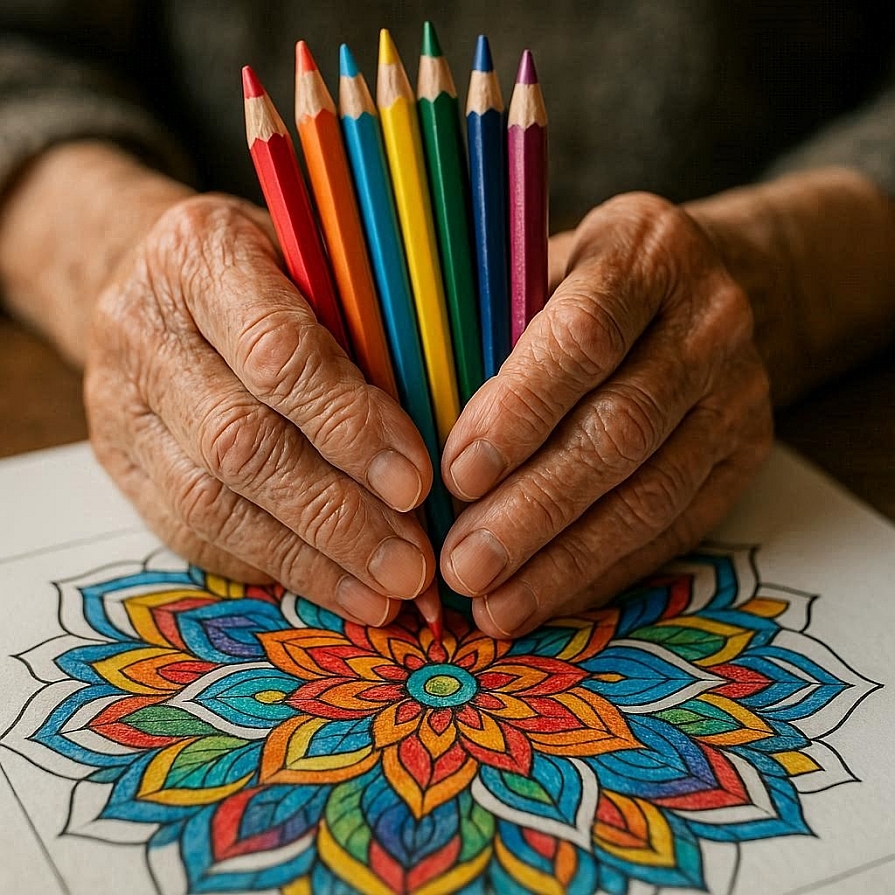
Unlike many forms of art, colouring does not demand technical skill or artistic mastery. Anyone can enjoy it, regardless of age or ability. This accessibility makes it a particularly inclusive form of creative expression. The absence of expectation or judgment removes the fear of imperfection, which can otherwise inhibit creativity.
For many adults, colouring rekindles a sense of creative freedom often lost over time. It encourages playfulness and curiosity without the weight of performance. The simple act of choosing a colour palette and watching it transform a blank design can awaken joy and fulfilment. This reconnection to creativity nurtures self-esteem and reminds the colourer that beauty and expression can exist in small, simple acts.
The Role of Colouring in Routine Self-Care
Incorporating colouring into a daily or weekly routine can become a meaningful part of self-care. Setting aside time for quiet creativity allows the mind to recover from constant stimulation. It serves as a personal ritual of rest, a time to slow down and check in with one’s emotions. Over time, such a routine can cultivate resilience and balance, as it provides a consistent outlet for stress release.
Whether done in the morning to set a calm tone for the day or in the evening to unwind, colouring can act as an anchor within the day’s rhythm. This practice of intentional stillness, supported by colour and creativity, reminds individuals of the importance of caring for their mental landscape as attentively as they care for their physical one.
Community and Connection Through Colour
Though colouring can be a deeply personal experience, it also has the potential to foster connection. Sharing completed pages or working alongside others creates a gentle sense of community. When individuals colour together, conversation often flows easily, grounded in a shared creative experience. This sense of belonging can enhance emotional well-being, reducing feelings of isolation.
In recent years, colouring groups and clubs have emerged both online and in person. These spaces provide encouragement and inspiration without competition. The sense of unity found in such communities reflects one of colouring’s most beautiful qualities—the ability to bring calm and connection simultaneously.
Restoring Balance in a Digital World
In an era dominated by screens and fast-paced information, colouring offers a tangible, analogue counterbalance. It engages the senses in a way that digital activities rarely can. The texture of paper, the sound of pencils gliding, and the physical blending of colours all ground the colourer in the physical world.
This tactile engagement can be profoundly restorative. It helps to counteract the mental overstimulation that constant digital exposure creates. Colouring invites stillness, patience, and focus—qualities that are increasingly rare yet essential for maintaining emotional and mental health. By turning away from screens and focusing on a page, the mind finds quiet space for renewal.
Colouring as a Bridge Between Childhood and Adulthood
Part of colouring’s appeal lies in its connection to childhood memories. Many adults recall the pleasure of colouring as a child, when the world felt simpler and imagination flowed freely. Returning to this activity as an adult can awaken that same sense of simplicity and wonder. It reconnects the colourer to a more innocent and carefree version of themselves.
This connection can be healing. It allows individuals to rediscover aspects of themselves that may have been neglected through years of responsibility and busyness. In this way, colouring serves as a bridge between past and present, bringing forward the joy and playfulness of youth while providing the calm and reflection of adulthood.
The Therapeutic Power of Completion
Completing a colouring page brings a quiet but genuine sense of achievement. Watching a blank design slowly transform into a vibrant image provides visual proof of progress. This sense of completion can be particularly beneficial for those struggling with feelings of stagnation or lack of control in other areas of life.
The finished artwork stands as a small but tangible reminder that beauty can emerge from patience and attention. It reinforces a sense of capability and purpose. Even though colouring is not goal-oriented, the act of finishing a page creates a positive emotional reward that contributes to a broader sense of well-being.
Supporting Restful Sleep and Relaxation
Many people find that colouring before bed promotes better sleep. The calm, repetitive action helps the mind transition away from the day’s activities. Unlike screens, which emit stimulating light, colouring engages the senses in a soft and grounding way. This gradual slowing of thought and movement prepares the body for rest.
By establishing colouring as part of a bedtime routine, individuals can train their minds to associate the activity with relaxation and unwinding. Over time, this habit can improve sleep quality, reduce insomnia, and help the body maintain a more natural rhythm of rest.
Colouring as a Reflection of the Inner Self
Every completed colouring page tells a quiet story. The choice of colours, patterns, and intensity often mirrors the colourer’s inner world. Observing these choices over time can offer insight into mood and emotional shifts. Some may notice brighter tones during joyful periods or darker, more subdued palettes during times of stress.
This reflective quality allows colouring to act as a mirror of the inner self. It becomes not only an act of creation but also one of self-discovery. The page becomes a visual journal through which emotions are processed and understood.
The Quiet Strength of Colouring
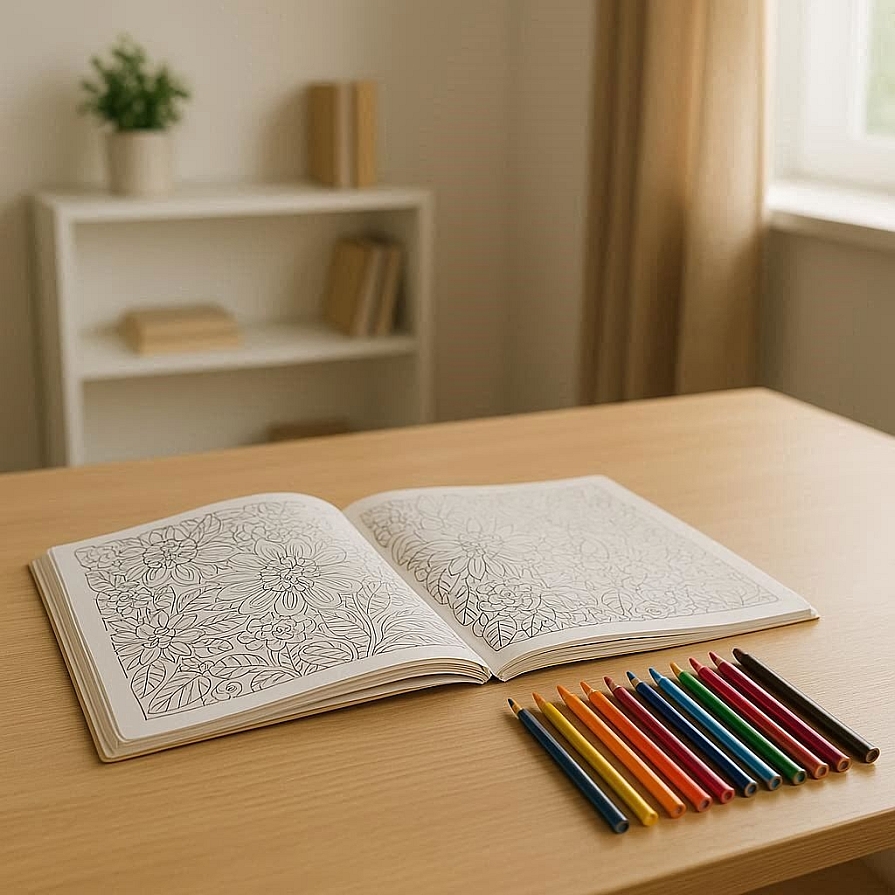
Colouring’s growing popularity among adults is far more than a passing trend; it is a reflection of a collective desire to slow down, to reconnect, and to find peace within a demanding world. Through its blend of mindfulness, creativity, and simplicity, colouring offers profound benefits for mental well-being. It calms the anxious mind, nurtures emotional healing, strengthens focus, and rekindles joy in creativity.
Each page coloured becomes a gentle meditation, a moment of self-care, and a reminder of the beauty found in simplicity. In a world that constantly asks for speed and productivity, colouring invites stillness. It reminds us that peace of mind can be found not in grand gestures, but in small, mindful moments filled with colour.




